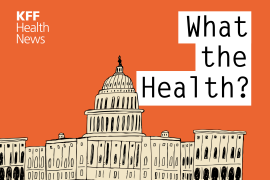Hospitals Slow to Comply With Federal Needlestick Safety and Prevention Act, San Francisco Chronicle Reports
Many U.S. hospitals have been slow to comply with the federal Needlestick Safety and Prevention Act, which unanimously passed both houses of Congress last year and was signed into law by former President Bill Clinton, the San Francisco Chronicle reports. The law, which seeks to protect health care workers from accidental needlesticks by requiring that hospitals use newer syringes with safety features that "retract, blunt or cover" needles after use, was supposed to go into effect in April, but was delayed until July to give hospitals more time to comply. According to a government study, the improved safety devices can reduce the number of accidental needlesticks, which can spread diseases such as HIV or hepatitis, by as much as 80%. However, the new devices are more expensive and require additional training for health care workers and evaluation by hospital staff. Since the Occupational Safety and Health Administration began enforcing the law in July, 34 facilities nationwide have been cited for failure to comply. According to Carol Patterson, a consultant with the Joint Commission on Accreditation of Healthcare Organizations, a survey conducted for her organization earlier this year found that "less than half" of the hospitals surveyed were aware of the new law. Bill Borwegen, occupational health director for the Service Employees International Union, which represents the largest number of health care workers in the country and pushed for the law, said part of the blame for the low compliance lies with OSHA, which has not issued a "compliance directive" telling inspectors how to enforce the regulations. "Hospitals are dragging their feet, and many won't do anything until they see OSHA really start to cite facilities," he said. He added that hospitals are purchasing the "cheapest" safety devices, even though newer devices are available and are "much safer." OSHA officials are conducting a final review of the directive, according to OSHA Compliance Director Melody Sands, who attributed the delay to the "changeover in staff with the new [Bush] administration."
The California Model
The federal law is based on a 1998 California law that was passed after the Chronicle published a series of articles stating that more than 600,000 health care workers are accidentally stuck with needles every year, and "thousands" have died over the last decade as a result of diseases contracted from needlesticks. Supply shortages of the new devices "crimped" implementation of the California law in the first year, but most hospitals have since begun using the safer needles. "It's been a huge project. But we now have the basics in place," Cynthia Fine, an infection control officer at California's John Muir Medical Center, said (Carlsen, San Francisco Chronicle, 11/5).






